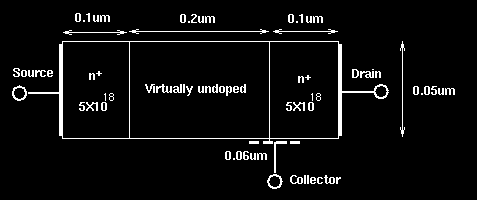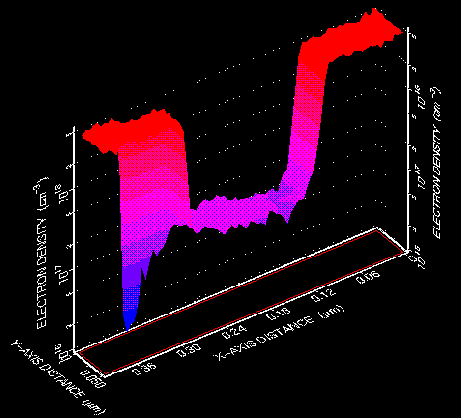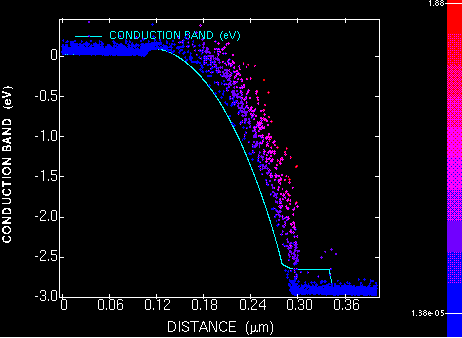
DAMOCLES is a state-of-the-art Device Monte Carlo simulator, which can model the electron distribution function in both real and momentum (up to 5.0eV) spaces. At Stanford, DAMOCLES is used to computationally prototype the newly proposed HESS (Hot Electron on Silicon Substrate) Transistor, which in principle is a promising candidate for pico-second operations using only silicon technology. The HESS transistor can be represented by the following simulation structure:

The electron concentration from the DAMOCLES computation after 5ps is shown below:

The conduction band cross-section at y=0 is shown together with the simulated electrons (the kinetic energy is the distance between electrons and the conduction band).

It can be seen that electrons will become hotter close to the drain n+ region and some may overcome the Schottky barrier.
References:
[1] M. V. Fischetti,
``Monte Carlo simulation of transport in technologically significant
semiconductors of the diamond and zinc-blende structures - Part I:
homogeneous transport, '' IEEE Trans. Electron Devices, vol. 38,
pp. 634-649, 1991.
[2] M. V. Fischetti and S. E. Laux,
``Monte Carlo simulation of transport in technologically significant
semiconductors of the diamond and zinc-blende structures - Part II:
submicrometer MOSFET's, '' IEEE Trans. Electron Devices, vol. 38,
pp. 650-660, 1991.
Edwin C. Kan (kan@gloworm.stanford.edu)
Last updated: 4/29/96